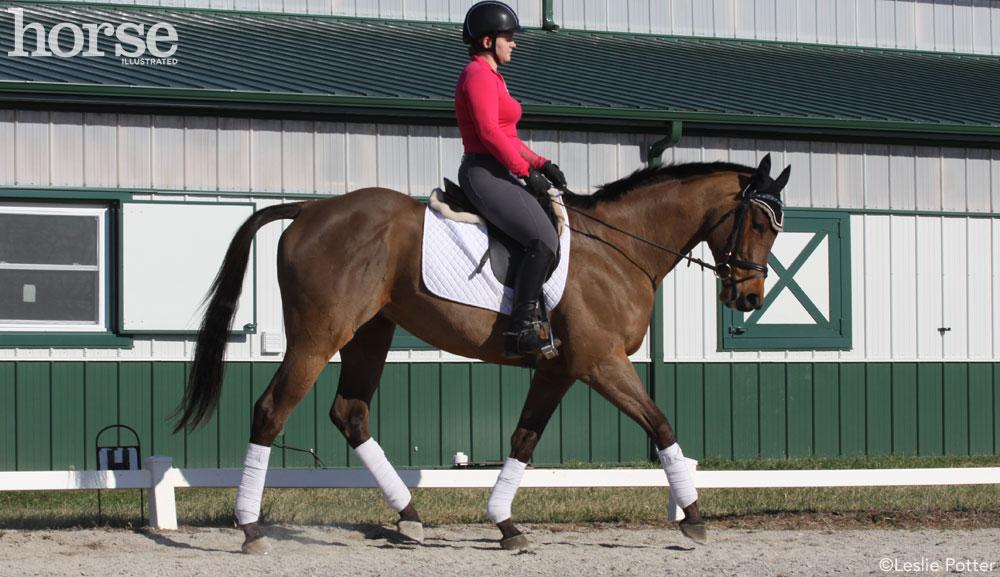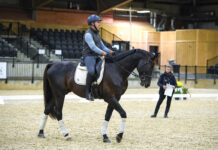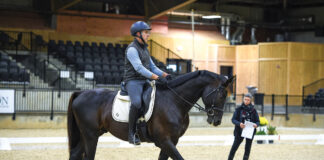
Q: My trainer explains the half-halt as pulling and pushing at the same time, but it’s still a mystery to me. Can you explain the mechanics of the half-halt?
The half-halt is a weight-shifting cue. It must be initiated from the rider’s legs. Pressure from the inside leg will keep the horse’s inside hind leg and ribcage from drifting in while transferring weight to the outside rein. The outside leg pressure maintains the line of travel and keeps the ribcage from overbending, thus maintaining balanced connection in your inside hand.
Half-halts have a beginning and an end. They begin with your leg pressure and end when your horse gives to the pressure in the rein. When your horse is green, it takes him longer to give to the half-halt. Therefore, your half-halts will last longer, sometimes two to four strides, and must be given back to back. The more advanced horse can move through several strides independently between the half-halts.
For the green horse, just soften your hand after a half-halt, wait a stride, then begin a new half-halt. Big releases from the reins are not a good idea for young, green horses as they don’t know what to do with that much release. However, a big release is a much-needed test for the more developed horse to see if he still carries himself.
The connecting half-halt is the lifeline of your training and ridden in almost every exercise, movement, and transition. It transfers weight to the horse’s hind legs. It can be ridden with one rein or both reins. If ridden with the outside rein, it transfers weight to the horse’s inside hind leg. On both reins, it shifts weight to both hind legs. The pressure is direct from your hand in line with your hip.
The connecting half-halt can be strong or soft, but it must be accompanied by leg and seat. If the half-halt is strong, the leg pressure preceding it must be strong, and the seat motion must have a strong push as well. Use this half-halt before transitions up and down, before and after every movement and every corner. It is the glue of your test and your training.
A second type of half-halt, called the bending half-halt, is used for advanced movements and is ridden primarily on the inside rein.
Jane Renner is a USDF bronze, silver, and gold medalist. She currently operates Renner Dressage in Franktown, Colo., and travels to conduct clinics around the country, offering a fresh approach to classical dressage as it applies to different breeds.
This article originally appeared in the August 2015 issue of Horse Illustrated magazine. Click here to subscribe!






